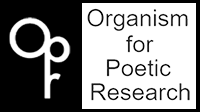Meta_ graphia was conceived as a response to Micrographia, a 1665 text by Robert Hooke on the experimental potentials of early microscope technologies. In this text, Hooke fixates on the materiality of print media, making careful observations of paper, ink, books, book-worms, and related textures. The examination of such objects, tools close at hand to the scientific writer, constitutes a certain reflexive poetics, a writing of writing’s own material support.
Meta_ graphia brings a similar reflexive microscopy, loosely defined, to the metadata of scientific-archival objects, to the paratextual markers, codes, and labels attached to the samples and specimens which they organize and taxonomize. This would also be a ‘metascopy,’ because it would be an observation of data ostensibly above and outside the “content” of an archive. Attracted to the text and color fields on glass microscope slides, Meta_ graphia scans these and other storage apparatus, displacing them from the position of container to the position of specimen.
Initially, the scientific-archival materials with which Meta_ graphia works were all found in the Nature Lab at the Rhode Island School of Design in Providence, RI. The scanned materials—e.g., the reverse sides of pressed plant specimens or microscope slide labels—display a diversity of styles and times of inscription, as well as a compelling range of translucencies and opacities (layering of inscriptions). The images index the lab’s acquisition of materials over microhistorical time as an accretion of marks, where each mark differs from the next in composition, arrangement, format, line quality, etc. Of course, these aspects of the system, from a protocological and functional perspective, make very little difference; as images, however, each little deviation has profound import.
The project will evolve in the course of the residency as different locations, archives, and forms are explored.
Alec Mapes-Frances is a writer and designer currently living in Brooklyn, NY.
alecmapesfrances.com
